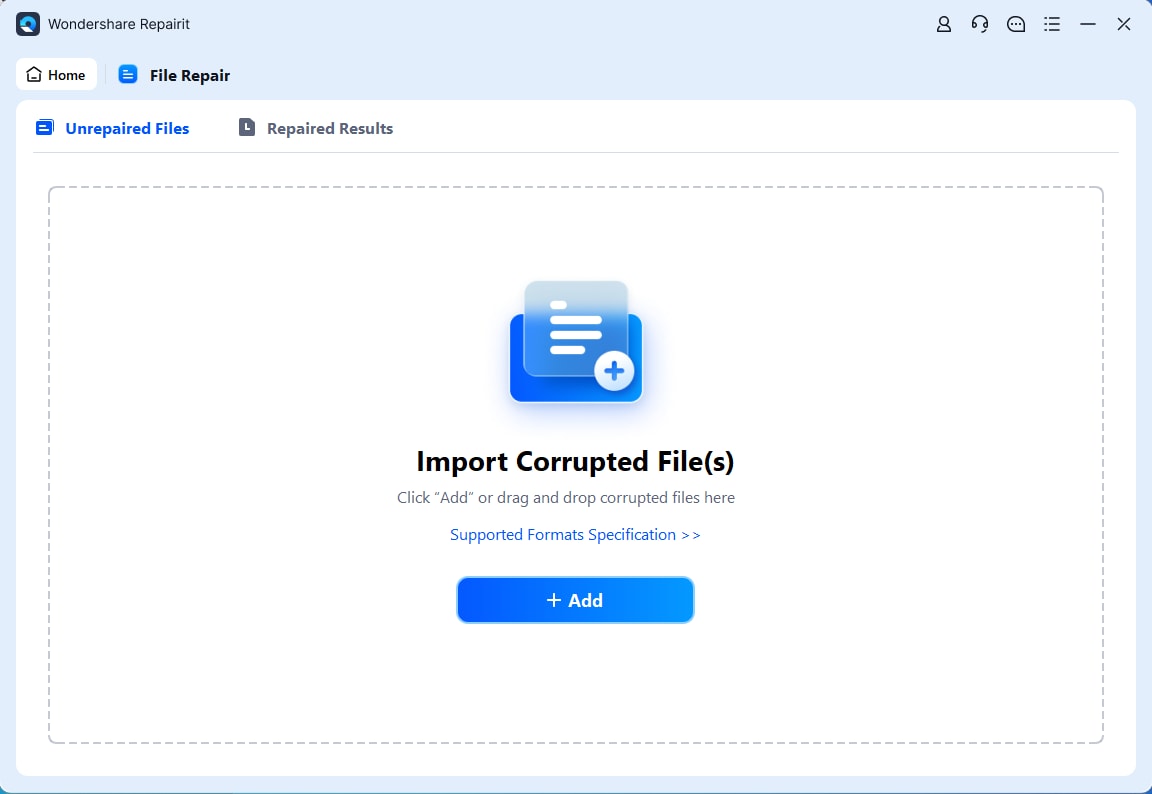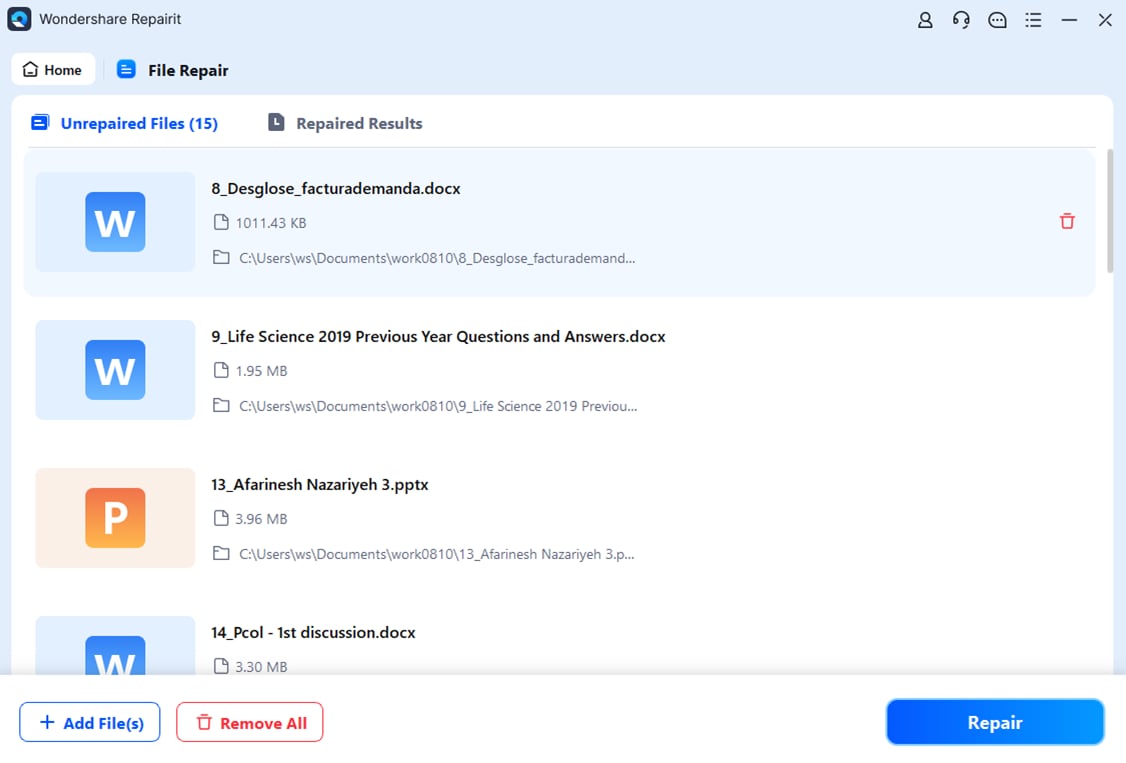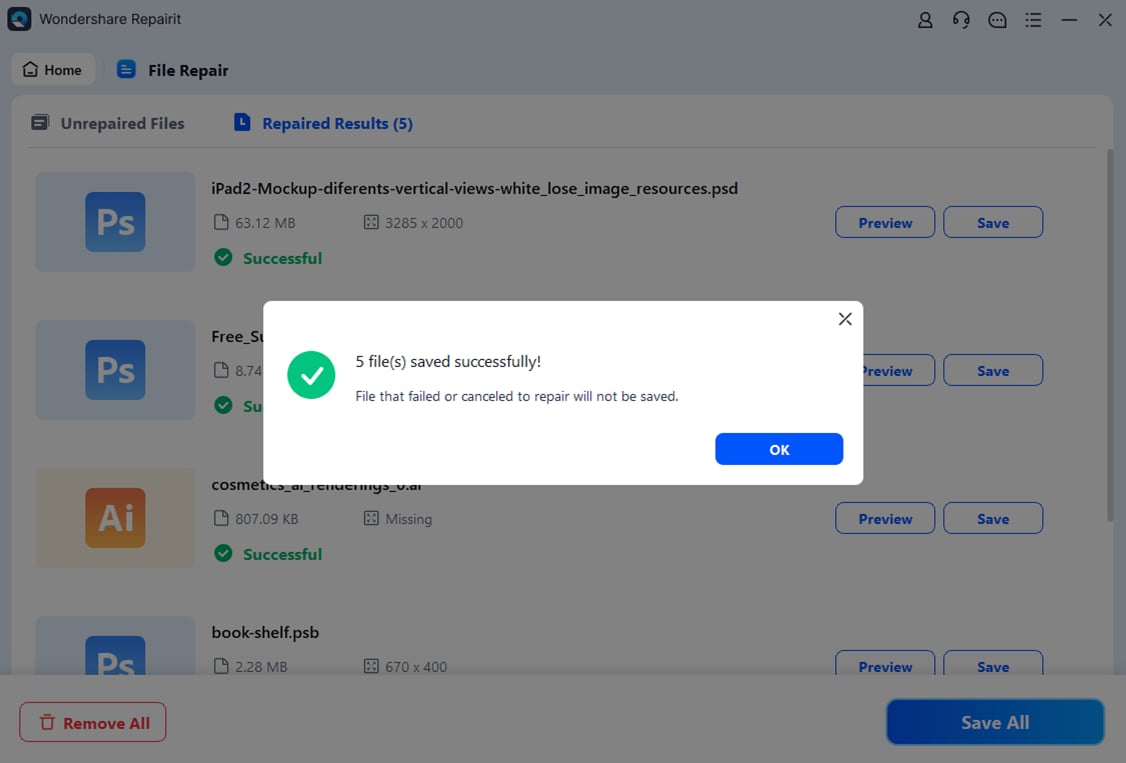Have you ever felt frustrated? Your important Microsoft Office files refuse to open or get corrupted. It's a situation that can bring work to a grinding halt and cause a lot of stress. But fear not! This article is here to help you overcome such office nightmares with ease.
In this article, we'll explore the Microsoft Office repair tool. We'll also cover many troubleshooting techniques to fix corrupted Office files. They will help you solve Office problems.
Part 1: Why Do Microsoft Office Files Get Corrupted?
Office files can corrupt for many reasons. Here are some common reasons why Microsoft Office files can get corrupted:
- Software conflicts are incompatibilities between Microsoft Office and other installed software. They can also be caused by operating system updates or third-party add-ons. These conflicts can sometimes cause file corruption.
- Power outages or system crashes are abrupt. They can happen during file operations. They interrupt the writing process and damage files.
- Viruses, worms, or trojans are types of malicious software. They can corrupt Office files. This corruption leads to data loss or file damage.
- Disk errors or bad sectors cause file damage or data loss. They happen on the storage medium, like hard drives or removable media, when it gets corrupted.
- Network connectivity issues happen when network connections are interrupted. They can cause file corruption during file transfers or cloud storage.
Part 2: Best Office File Repair Tool: Repairit File Repair

-
Repair damaged files with all levels of corruption, including blank files, files not opening, unrecognizable format, unreadable content, files layout changed, etc.
-
Support to repair all formats of PDF, Word, Excel, PowerPoint, Zip, and Adobe files.
-
Perfectly repair corrupted files with a very high success rate, without modifying the original file.
-
No limit to the number and size of the repairable files.
-
Support Windows 11/10/8/7/Vista, Windows Server 2003/2008/2012/2016/2019/2022, and macOS 10.10~macOS 13.
One of the best tools for fixing corrupted Microsoft Office files is Repairit File Repair. This powerful tool fixes Microsoft Office files. It recovers and repairs various types of Office files, including Word, Excel, and PowerPoint files.
Repairit File Repair uses advanced algorithms. They scan and find issues in office files. Then, they use sophisticated techniques to fix the files. Repairit File Repair has extra advanced features. It offers batch repairs for many files. It supports file formats beyond Microsoft Office. It can recover data from very corrupted files.
This Office 365 repair tool works with many Microsoft Office versions, including Office 365. It will fix any file-corruption issues.
Simply follow these steps to use this Microsoft Office repair utility:
Step 1: Click on the "Add” button to choose the corrupted Office file(s) you want to repair.

Step 2: Once you've chosen the corrupted file(s), simply click the "Repair" button. The tool will then scan the file(s) for any corruption issues and show you its progress.

Step 3: After scanning and repairing, you can preview the fixed file(s) right within the tool. If everything looks good, just click "Save All" to store the repaired file(s) on your computer or network drive.

Attention:
If you do not want to download software on your computer and your corrupted file is no more than 3GB, you can try the online version of Repairit
Part 3: Other Effective MS Office Repair Tools and Troubleshooting Techniques
While Repairit File Repair is an excellent office repair tool, there are several other troubleshooting techniques and utilities available to help you resolve Microsoft Office issues.
Here are some additional methods you can try, along with step-by-step instructions:
#1 Use the Quick Repair Feature to Resolve Common Office Errors
Microsoft Office has a built-in Quick Repair feature. It can fix common issues with Office applications. This Windows Office repair tool scans for and tries to fix problems. They are related to Office installs, corrupted files, and other small glitches.
Follow these steps to use the Quick Repair feature:
Step 1: Open the Control Panel on your Windows computer. Navigate to the "Programs and Features" section.

Step 2: Locate your Microsoft Office installation in the list of programs. Right-click on the Office entry and select “Change" from the context menu.

Step 3: Windows will now display two options for repair on the screen: Quick Repair and Online Repair. Opt for the "Quick Repair" choice and proceed by clicking the "Repair" button.

Step 4: Once complete, try opening and using the Office applications again.
#2 Use Microsoft SaRA Tool to Troubleshoot Office Problems
SaRA is a powerful tool. It is for repairing Office. It finds and fixes many Office issues. This tool can find and fix problems with Office. It works on installations, updates, and settings. It can also find and fix broken Office files. Here's how to use SaRA:
Step 1: Run the SaRA executable file to launch the tool.
Step 2: Select the Office program you're experiencing issues with (e.g., Word, Excel, PowerPoint).

Step 3: Follow the on-screen prompts to diagnose and resolve the identified problems. SaRA will attempt to repair any issues it finds or provide you with additional troubleshooting steps.
#3 Install Microsoft Office Updates for Enhanced Performance and Bug Fixes
You must keep your Microsoft Office suite up to date. This is crucial for good performance and stability. Microsoft releases updates and patches. They fix known issues, security holes, and compatibility problems. Follow these steps to install Office updates:
Step 1: Open any Office application (e.g., Word, Excel, PowerPoint). Navigate to the "File" menu and select "Account".

Step 2: In the "Product Activated" section, click on "Update Options" and select "Update Now" to search for and install available updates.

Step 3: If prompted, follow the on-screen instructions to download and install the updates.
#4 Use the "System Restore" Utility to Undo Recent Modifications
System Restore is built into Windows. It can be a lifesaver when recent system changes or installs cause Office issues.
Here's how to use System Restore:
Step 1: Open the Start menu and search for "System Restore." Select "Create a restore point" from the search results.

Step 2: In the System Properties window, click on the "System Restore" button. Follow the prompts to choose a restore point from a date before the Office issues began.

Step 3: Choose the restore point and click "Next" to start the system restore. Your computer will reboot, applying the restore point to reverse recent changes that might have affected Microsoft Office.
#5 Stop and Re-launch MS Office Service to restore Office functionality.
Sometimes, Office-related problems can be resolved by simply stopping and restarting the Microsoft Office service.
Here's how to do it:
Step 1: Press the "Ctrl + Shift + Esc" keys simultaneously to open the Task Manager. Navigate to the "Processes" tab.
Step 2: Scroll down and locate the "Microsoft Office" service in the list. Right-click on the "Microsoft Office" service and select "End Task" to stop the service.

Step 3: Close the Task Manager and try opening and using the Office applications again.
#6 Update Windows Drivers to Fix Compatibility Issues
Outdated or corrupted device drivers can sometimes cause conflicts with Microsoft Office applications, leading to various issues. Follow these steps to update your Windows drivers:
Step 1: Search for Device Manager in the Start menu to open it.
Step 2: Expand the category for the device you want to update drivers for (e.g., Display adapters, Sound, video and game controllers, etc.). Right-click on the specific device and select "Update driver" from the context menu.

Step 3: Choose the option to "Search automatically for updated driver software." Windows will search for and install the latest available drivers for that device.
Step 4: Repeat the process for any other devices that may require driver updates. Once complete, restart your computer and try using Microsoft Office again.
By following these troubleshooting techniques and utilizing the various office repair tools mentioned, you'll be better equipped to resolve a wide range of Microsoft Office issues, ensuring optimal productivity and a seamless work experience.
Conclusion
Microsoft Office is a powerful and versatile productivity suite, but it's not immune to errors and file corruptions. You can fix Office problems. To do so, understand their likely causes. Then, use the right office repair tools and troubleshooting MS Office methods. This will help you keep a smooth workflow.
-
Q: How do I access the Quick Repair feature in Microsoft Office?
-
To access the Quick Repair feature, go to the Control Panel, select "Programs and Features," locate your Office installation, right-click on it, and choose "Quick Repair."
-
Q: Can I use System Restore to undo recent Office installations or updates?
-
Yes, the System Restore utility can be used to revert your computer to a previous state, undoing any recent modifications or installations that may have caused conflicts or instability with Microsoft Office.
-
Q: Is it necessary to update my Windows drivers to resolve Office-related issues?
-
While not always required, updating your computer's device drivers can help address compatibility issues and conflicts that may be causing problems with Microsoft Office applications. It's generally a good practice to keep your drivers up-to-date.



 ChatGPT
ChatGPT
 Perplexity
Perplexity
 Google AI Mode
Google AI Mode
 Grok
Grok
